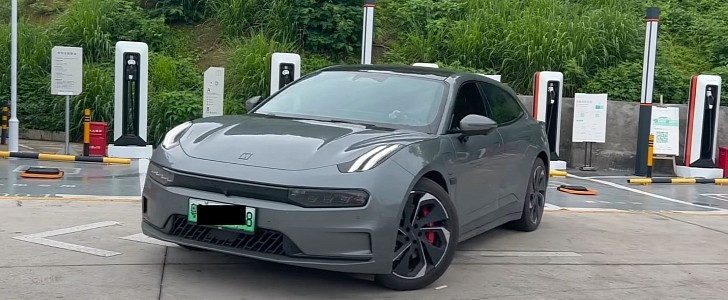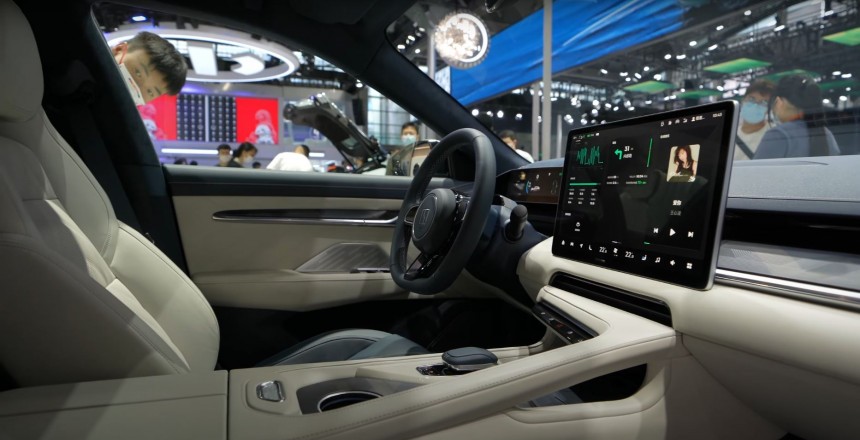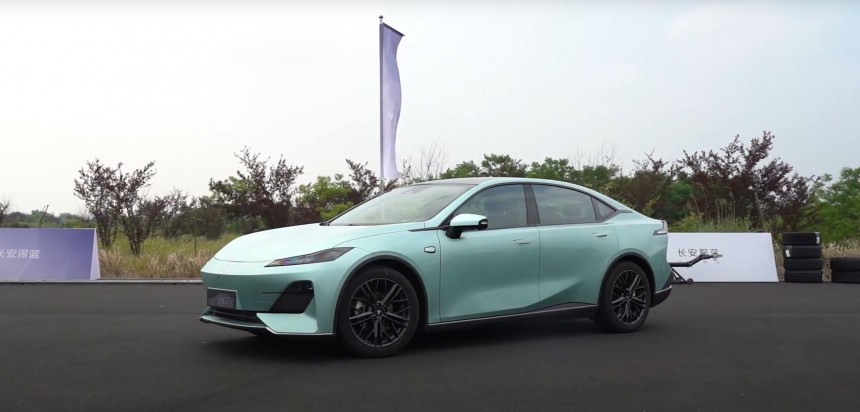It’s tempting. China managed to go from low-quality products and blatant copyright infringements to vehicles that have their own identity and are packed with reliable technology. Looking at the all-electric vehicles that can be bought today in the U.S. and the horrendous waiting times, importing a new EV from China is slowly starting to make a lot of financial sense. But it’s not a good idea. Here’s why.
Gas is currently sitting at a national average price of $4.9 a gallon. Most Americans, however, pay more than this to fill up their internal combustion engine vehicles. Be it a car or a pickup truck, you now must dig deeper into your pockets to make sure the traveled route doesn’t end prematurely.
It’s annoying and upsetting, and it made many Americans think twice about using a vehicle for random activities. Families are now coordinating to share this cost by carpooling, while enthusiasts are convincing themselves it’s time to look at something else than just V8s.
Some Americans are also discovering nowadays that using an electric car or truck is a budget-friendly way of moving around. That’s why companies like Tesla, Rivian, BMW, and Ford are ramping up production as best as they can.
However, it’s not enough. The unstable geopolitical context, a health crisis that doesn’t seem to find an end, parts sourcing, and shipping issues are all causing problems. That’s mostly why we’ve all gotten used to the idea that pre-ordering an untested and unseen vehicle is a great way of making sure there will be something sitting in the garage in a year or so.
We got to a point where the hope of owning a vehicle surpasses the instinct to test it and verify it.
Just imagine this scenario. It’s 2015 and someone tells you that in six or seven years you will happily pay for a first-generation vehicle online. You will also be carefree about all of it. Not one single thought would end up bothering you. You wouldn’t care about the delivery timetable and what the car or truck is like to drive. You’d just buy or lease it when the time to do so comes. You would’ve most likely thought they were not thinking straight.
But here we are. It’s the world we live in, and it doesn’t look like it can get much better in the short term.
Naturally, anyone that wants to save money during these tough times might be looking for alternatives. Some buy cheap gas or diesel cars that barely run, others explore ways of getting a good EV from other markets.
Enter China and its absurdly cheap all-electric vehicles.
There’s no need to compare the above-mentioned cars, even though there’s a noticeable difference in power and range between them. That’s because there’s one important barrier – homologation. The cheap Chinese cars aren’t made according to the U.S. Federal Motor Vehicle Safety Standards (FMVSS) and are not put through the Environmental Protection Agency (EPA) certification process.
Moreover, other important laws and regulations must be upheld by manufacturers or third parties that want to sell vehicles in the U.S. Besides the FMVSS, the following must also be considered: the National Traffic and Motor Vehicle Safety Act, the Clean Air Act, the Imported Motor Vehicle Safety Compliance Act, the Motor Vehicle Information and Cost Savings Act, the Vehicle Carrier Safety Improvement Act, and the Americans with Disabilities Act.
On top of all this, there’s currently a 27.5% tariff that must be paid for any vehicle or vehicle parts coming from China. That $29,000 Changan EV just turned into an almost $37,000 car.
Chinese cars also use different plugs and ports. Additionally, you’d need a network of dealers or service centers that can fix your car when it breaks down. It happens to any vehicle at some point and cars from China are not an exception.
And don’t think the NHTSA might grant you a “Show or Display” exemption. The authorities don’t take such decisions lightly.
There's also the trust issue. Are you going to trust such an entity with your hard-earned cash? Think about it. It's better to wait.
In the end, if you’re not looking forward to importing a 25-year-old car from China, don’t pull the trigger for a new one. It’s simply not worth it. At all!
It’s annoying and upsetting, and it made many Americans think twice about using a vehicle for random activities. Families are now coordinating to share this cost by carpooling, while enthusiasts are convincing themselves it’s time to look at something else than just V8s.
Some Americans are also discovering nowadays that using an electric car or truck is a budget-friendly way of moving around. That’s why companies like Tesla, Rivian, BMW, and Ford are ramping up production as best as they can.
However, it’s not enough. The unstable geopolitical context, a health crisis that doesn’t seem to find an end, parts sourcing, and shipping issues are all causing problems. That’s mostly why we’ve all gotten used to the idea that pre-ordering an untested and unseen vehicle is a great way of making sure there will be something sitting in the garage in a year or so.
We're all paying for it
Moreover, this entire fiasco eventually ends up reflected in the final price paid by the consumer. Unbelievable price hikes dressed as “market adjustments” made the headlines late last year.We got to a point where the hope of owning a vehicle surpasses the instinct to test it and verify it.
But here we are. It’s the world we live in, and it doesn’t look like it can get much better in the short term.
Naturally, anyone that wants to save money during these tough times might be looking for alternatives. Some buy cheap gas or diesel cars that barely run, others explore ways of getting a good EV from other markets.
Enter China and its absurdly cheap all-electric vehicles.
Oh, my! These discounts! Wait...
I was browsing a website that claims it ships Chinese EVs to the U.S. This business also allows you to buy cars like the 2022 Changan SL03 in bulk. You can get three, five, or even ten. At just $29,000, it sounds like a bargain. The whole family could switch to zero-emission vehicles. Tesla’s cheapest Model 3, in comparison, starts with no incentives from $46,990. You instantly save almost $18,000! They even take care of the shipping. It all sounds too good to be true, doesn’t it? Well, it is!Moreover, other important laws and regulations must be upheld by manufacturers or third parties that want to sell vehicles in the U.S. Besides the FMVSS, the following must also be considered: the National Traffic and Motor Vehicle Safety Act, the Clean Air Act, the Imported Motor Vehicle Safety Compliance Act, the Motor Vehicle Information and Cost Savings Act, the Vehicle Carrier Safety Improvement Act, and the Americans with Disabilities Act.
On top of all this, there’s currently a 27.5% tariff that must be paid for any vehicle or vehicle parts coming from China. That $29,000 Changan EV just turned into an almost $37,000 car.
Chinese cars also use different plugs and ports. Additionally, you’d need a network of dealers or service centers that can fix your car when it breaks down. It happens to any vehicle at some point and cars from China are not an exception.
And don’t think the NHTSA might grant you a “Show or Display” exemption. The authorities don’t take such decisions lightly.
There's also the trust issue. Are you going to trust such an entity with your hard-earned cash? Think about it. It's better to wait.
In the end, if you’re not looking forward to importing a 25-year-old car from China, don’t pull the trigger for a new one. It’s simply not worth it. At all!













